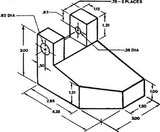
Unrestricted Use
CC BY
https://www.creativebloq.com/features/isometric-drawing#:~:text=Isometric%20drawing%20is%20a%20form,in%20a%20non%2Ddistorted%20image.
- Subject:
- Architecture and Design
- Material Type:
- Lecture Notes
- Author:
- Lungelo Shabalala
- Date Added:
- 03/18/2021